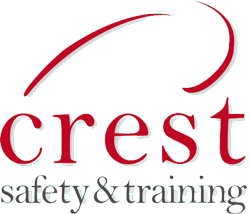Recently I’ve heard the terms audit and inspection used in the incorrect context. This blog aims to provide some definition and distinction between these two terms.
Firstly, what do they have in common and why the confusion? Both audits and inspections involve an examination of workplace health and safety arrangements with a goal of identifying strengths and weaknesses. Both measure against a set of pre-determined standards.
So, what is the difference?
Inspections are less formal and involve a physical examination of the work environment. They tend to be conducted more routinely and use a checklist to gather consistent information. For example:
· Is electrical equipment tested and tagged?
· Is emergency exit signage in place?
· Are chemicals labelled?
For a list of useful workplace inspection checklists, visit WorkSafe WA at https://www.commerce.wa.gov.au/worksafe/checklists-and-subby-pack
Audits are more formal and involve an examination of the health and safety management system. They are more in-depth, document focussed and as such are conducted less regularly. Their aim is to determine whether the management system is performing to the needs of the organisation and its compliance requirements.
Audits are defined in AS/NZS 4801:2001 as: “a systematic examination against defined criteria to determine whether activities and related results conform to planned arrangements and whether these arrangements are implemented effectively and are suitable to achieve the organization’s policy and objectives.”
For example, audits may include a review of:
· Reporting of safety related activities
· Documentation and implementation of safety and health objectives
· Budget allocation to assist in achieving safety and health objectives
· Emergency planning
· Procedures for involvement and consultation with workers on safety and health issues
· Documented hazard identification and risk management for work processes
So why the confusion? There is always an overlap between physical health and safety arrangements and the system that manages the work environment. Here are some examples for you to consider:
· Safety Data Sheets for chemicals. An inspection would review whether they were available for workers. An audit would additionally examine if there was a process in place to update them.
· Electrical equipment test and tag. An inspection would check whether electrical equipment had a current tag to show it had been tested. An audit would additionally determine whether there is an implemented schedule to ensure this takes place.
· Office furniture. An inspection might examine the condition of office equipment. An audit might review whether ergonomic assessments have been conducted in line with the organisations’ objectives.
So, whilst inspections and audits are two different means of measuring an organisations’ health and safety performance, they can cross paths.
